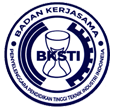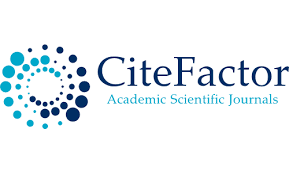Cause-and-Effect Relationship Analysis of Cocoa Pod Husk Composites in Water Absorption Process Parametric Evaluation: A DEMATEL Approach
Abstract
Keywords
Full Text:
PDFReferences
Ajibade, O.A., Agunsoye, J.O., Oke S.A. (2020). A wear rate model incorporating inflationary cost of agro-waste filled organic composite materials in brake pad applications to lower cost of composites. SN Applied Sciences, (Accepted for publication), Springer
Asad MM, Mohajerani N, Nourseresh M. (2016). Prioritizing factors affecting customer satisfaction in the internet banking system based on cause and effect relationships. Procedia Economics and Finance, 36, 210–219
Ayanladun C.A., Oke S.A. (2020). A sensitivity analysis of water absorption parameters of Theobroma cacao l. reinforced epoxy composites, Journal of Applied Science & Process Engineering, 7(2), 587-610.
Ajibade O.A., Agunsoye J.O., Oke S.A. (2019). Optimisation of water absorption parameters of dual-filler filled composites using Taguchi and moderated Taguchi techniques, Kufa Journal of Engineering, 10(2), 134-151.
Bhanot N., Qaiser F.H., Alkahtani M. and Rehman A.U. (2020). An integrated decision-making approach for cause-and-effect analysis of sustainable manufacturing indicators, Sustainability, 12, 1517, 1-20
Bismarck A., Baltazar-Y-Jimenez A. and Sarikakis K. (2006). Green composites as panacea? Socio-economic aspects of green materials. Environment, Development and Sustainability, 8, 445–463. https://doi.org/10.1007/s10668-005-8506-5
Chen C.A. (2012). Discussion on increasing college teacher’s willingness to adopt web-based learning in teaching, Business Management Research, 1, 1–8.
Chun K.S; Husseinsdyah S., Osman H. (2013). Modified cocoa pod husk filled polypropylene composites by using methacrylic acid, BioResources, 8, 3, 3260-3275
Chun K.S., Husseinsyah S. (2016). Agro waste-based composites from cocoa pod husk and polypropylene: Effect of filler content and chemical treatment, Journal of Thermoplastic Composite Materials, 29, 10, 1332–1351, DOI: 10.1177/08 92705714563125
Chun K.S., Yeng C.M., Hussiensyah S. (2018). Green coupling agent for agro‐waste based thermoplastic composites, 39(7), 2441-2450. https://doi.org/10.1002/pc.24228
de Brito M.K.T., Gomes dos Santos W.R., de Brito Correia B.R., de Queiroz R.A., de Souza Tavares F.V., de Oliveira Neto G.L. and de Lima A.G.B. (2019). Moisture absorption in polymer composites reinforced with vegetable fiber: a three-dimensional investigation via langmuir model, Polymers, 11(11), 1847, https://doi.org/10.3390/polym11111847
Dhandapani E., Suganthi S., Vignesh S., Dhanalakshmi M., Sundar J.K. & Raj V. (2020). Fabrication and physicochemical assessment of L-Histidine cross-linked PVA/CMC bio-composite membranes for antibacterial and food-packaging applications, Materials Technology, https://doi.org/10.1080/10667857.2020.1816383
Dungani R., Karina M., Subyakto , Sulaeman A., Hermawan D. and Hadiyane A. (2016). Agricultural waste fibers towards sustainability and advanced utilization: A review. Asian Journal of Plant Sciences, 15, 42-55. DOI: 10.3923/ajps.2016.42.55
Ehi I.P., Bidemi J.K., Yahaya L.E. (2016). Kinetic studies on water absorption properties of cocoa-pod epoxy composites, Iranica Journal of Energy and Environment, 7(1), 48-51
El-Shekeil, Y. A., Sapuan, S. M., & Haron, M. (2014). Effect of fiber loading on tensile properties of cocoa pod husk fibers reinforced thermoplastic polyurethane composites. Applied Mechanics and Materials, 564, 346–349. https://doi.org/10.4028/www.scientific.net/amm.564.346
Gupta M.K. (2018). Water absorption and its effect on mechanical properties of sisal composite, Journal of the Chinese Advanced Materials Society, 6(4), 561-572. https://doi.org/10.1080/22243682.2018.1522600
Gabus A, Fontela E (1973) Perceptions of the world problematique: communication procedure, communicating with those bearing collective responsibility, DEMATEL report no. 1. Battelle Geneva Research Center, Geneva
Haruna V.N., Abdulrahman A.S., Zubairu P.T., Isezuo L.O., Abdulrahman M.A., Onuoha D.C. (2014). Prospects and challenges of composites in a developing country, ARPN Journal of Engineering and Applied Sciences, 9(7), 1-9
Hu HY, Chiu SI, Cheng CC, Yen TM (2011) Applying the IPA and DEMATEL models to improve the order-winner criteria: a case study of Taiwan’s network communication equipment manufacturing industry. Expert Systems and Applications, 38(8), 9674–9683
Koay S.C., Chan M.Y., Pang, M.M., Tshai K.Y. (2017). Influence of filler loading and palm oil-based green coupling agent on torque rheological properties of polypropylene/cocoa pod husk composites, Advances in Polymer Technology, DOI: 10.1002/adv.21883
Chun K.S., Husseinsyah S. (2016). Effect of green coupling agent from waste oil fatty acid on properties of polypropylene, Polymer Bulletin, 73, 3465-3484.
Chun K.S., Husseinsyah S., Yeng C.M. (2017). Torque rheological properties of polypropylene/cocoa pod husk composites, Journal of Thermoplastic Composite Materials, 30(9), 1217-1227. https://doi.org/10.1177/0892705715618743
Fontela E, Gabus A (1976) The DEMATEL observer, DEMATEL 1976 report. Battelle Geneva Research Center, Geneva
Hsieh, YF., Lee, YC. & Lin, SB. (2016). Rebuilding DEMATEL threshold value: an example of a food and beverage information system. SpringerPlus 5, 1385. https://doi.org/10.1186/s40064-016-3083-7
Hu, Y. S., Chiu, S. I., Yen, T. M., Cheng, C. C. (2015). Assessment of supplier quality performance of computer manufacturing industry by using ANP and DEMATEL. The TQM Journal, 27(1), 122–134.
Imoisili P. E., Ezenwafor T.C., Attah-Daniel B.E. and Olusunle S.O.O. (2013a). Mechanical properties of cocoa-pod/epoxy composite: Effect of filler fraction, American Chemical Science Journal, 3(4), 526-531
Imoisili P.E., Etiobhio B.W., Ezenwafor. T.C., Attah-Daniels B.E., Olusunle S.O.O. (2013b), Physicochemical analysis of cocoa pod and its effect as a filler in polyester resin composite, International Journal of Science and Technology, 2(1), 89-93
Lee YC, Li ML, Yen TM, Huang TH (2010). Analysis of adopting an integrated decision making trial and evaluation laboratory on a technology acceptance model. Expert Systems and Applications, 37(2), 1745–1754
Lee YC, Hsieh YF, Guo YB 2013. Construct DTPB model by using DEMATEL: a study of a university library website. Programme Electronic library and Information Systems 47(2), 155–169
Li CW, Tzeng GW (2009). Identification of a threshold value for the DEMATEL method using the maximum mean de-entropy algorithm to find critical services provided by a semiconductor intellectual property mall. Expert Systems and Applications, 36(6), 9891–9898
Lu MT, Lin SW, Tzeng GH (2013). Improving RFID adoption in Taiwan’s healthcare industry based on a DEMATEL technique with a hybrid MCDM model. Decision Support System, 56, 259–269
Mangla S., Kumar P. and Barua M.K. (2014). An evaluation of attribute for improving the green supply chain performance via DEMATEL method, International Journal of Mechanical Engineering and Robotics, 1(1), 30-35.
Maraveas, C. 2020. Production of sustainable and biodegradable polymers from agricultural waste, Polymers, 12, 1127.
Muñoz E., García-Manrique J.A. (2015). Water absorption behaviour and its effect on the mechanical properties of flax fibre reinforced bioepoxy composites, International Journal of Polymer Science, 2015, 390275, 10. https://doi.org/10.1155/2015/390275
Olabisi A.I., Adam A.N., Okechukwu O.M. (2016). Development and assessment of composite brake pad using pulverized cocoa beans shells filler, International Journal of Materials Science and Applications, 5(2), 66-78. DOI: 10.11648/j.ijmsa.20160502.16
Puglia D., Dominici F., Badalotti M., Santulli C. and Kenny J.M. (2016). Tensile, thermal and morphological characterization of cocoa bean shells (CBS)/polycaprolactone-based composites, Journal of Renewable Materials, 4(3), 199-205. DOI: 10.7569/JRM.2016.634102
Ranjan, R., Chatterjee, P., Chakraborty, S. (2016). Performance evaluation of Indian Railway zones using DEMATEL and VIKOR methods. Benchmarking: An International Journal, 23(1), 78–95.
Sanyang M.L., Sapuan S.M., Haron M. (2017). Effect of cocoa pod husk filler loading on tensile properties of cocoa pod husk/polylactic acid green bio-composite films, The 2nd International Conference on Applied Science and Technology, 2017 (ICAST’17) pp. 020126-1-020126-6
Sumrit, D., Anuntavoranich, P. (2013). Using DEMATEL method to analyze the causal relations on technological innovation capability evaluation factors in Thai technology-based firms. International Transaction Journal of Engineering, Management and Applied Sciences, 4(2), 81–103.
Susanty A., Puspitasari N.B., Prastawa H. and Renaldi S.V. (2020). Exploring the best policy scenario plan for the dairy supply chain: a DEMATEL approach, Journal of Modelling in Management, DOI 10.1108/JM2-08-2019-0185
Todor M.P., Bulei C., Heput T. and Kiss I. (2018). Researches on the development of new composite materials complete / partially biodegradable using natural textile fibers of new vegetable origin and those recovered from textile waste, IOP Conference Series: Materials Science and Engineering, 294, 012021 doi:10.1088/1757-899X/294/1/012021
Tzeng, G. H., Chiang, C. H., Li, C. W. (2007). Evaluating intertwined effects in e-learning programs: A novel hybrid MCDM model based on factor analysis and DEMATEL. Expert Systems with Applications, 32(4), 1028–1044.
Uygun Ö, Kaçamak H, Kahraman ÜA (2015) An integrated DEMATEL and fuzzy ANP techniques for evaluation and selection of outsourcing provider for a telecommunication company. Computers and Industrial Engineering, 86, 137–146
Wardhono E.Y., Kanani N., Alfirano & Rahmayetty (2020). Development of polylactic acid (PLA) bio-composite films reinforced with bacterial cellulose nanocrystals (BCNC) without any surface modification, Journal of Dispersion Science and Technology, 41(10), 1488-1495. https://doi.org/10.1080/01932691.2019.1626739
Wang Z, Mathiyazhagan K, Xu L, Diabat A (2016) A decision making trial and evaluation laboratory approach to analyze the barriers to green supply chain management adoption in a food packaging company. Journal of Cleaner Production, 117, 19–28
Wu W.W., Lee Y.T. (2007). Developing global managers competencies using the fuzzy DEMATEL method. Expert Systems with Applications, 32, 499–507.
Wu, W-W. (2012). Segmenting critical factors for successful knowledge management implementation using the fuzzy DEMATEL method. Applied Soft Computing, 12, 527–535.
Yang, Y. P., Shieh, H. M., Leu, J. D., Tzeng, G. H. (2008). A novel hybrid MCDM model combined with DEMATEL and ANP with applications. International Journal of Operational Research, 5(3), 160–168.
Zhao L., Shi L., Wang J., Zhang Q., Yang X. & Lu Y. (2002). Degradable inorganic/polymer core-shell microspheres for pH-triggered release of indole-3-acetic acid, International Journal of Polymeric Materials and Polymeric Biomaterials, 69(5), 317-325. https://doi.org/10.1080/00914037.2018.1563087
DOI: http://dx.doi.org/10.22441/ijiem.v2i1.10225
Refbacks
- There are currently no refbacks.

This work is licensed under a Creative Commons Attribution-NonCommercial 4.0 International License.
IJIEM - Indonesian Journal of Industrial Engineering & Management
Program Pascasarjana Magister Teknik Industri Universitas Mercu Buana
Kampus Menteng - Gedung Tedja Buana, Floor 4th
Jl. Menteng Raya No. 29 Jakarta Pusat- Indonesia
Tlp.: +62 21 31935454 Fax: +62 21 31934474
http://publikasi.mercubuana.ac.id/index.php/ijiem
Email: [email protected]

This work is licensed under a Creative Commons Attribution-NonCommercial 4.0 International License.
The journal is indexed by:





1.png)
.png)
.png)
.png)







